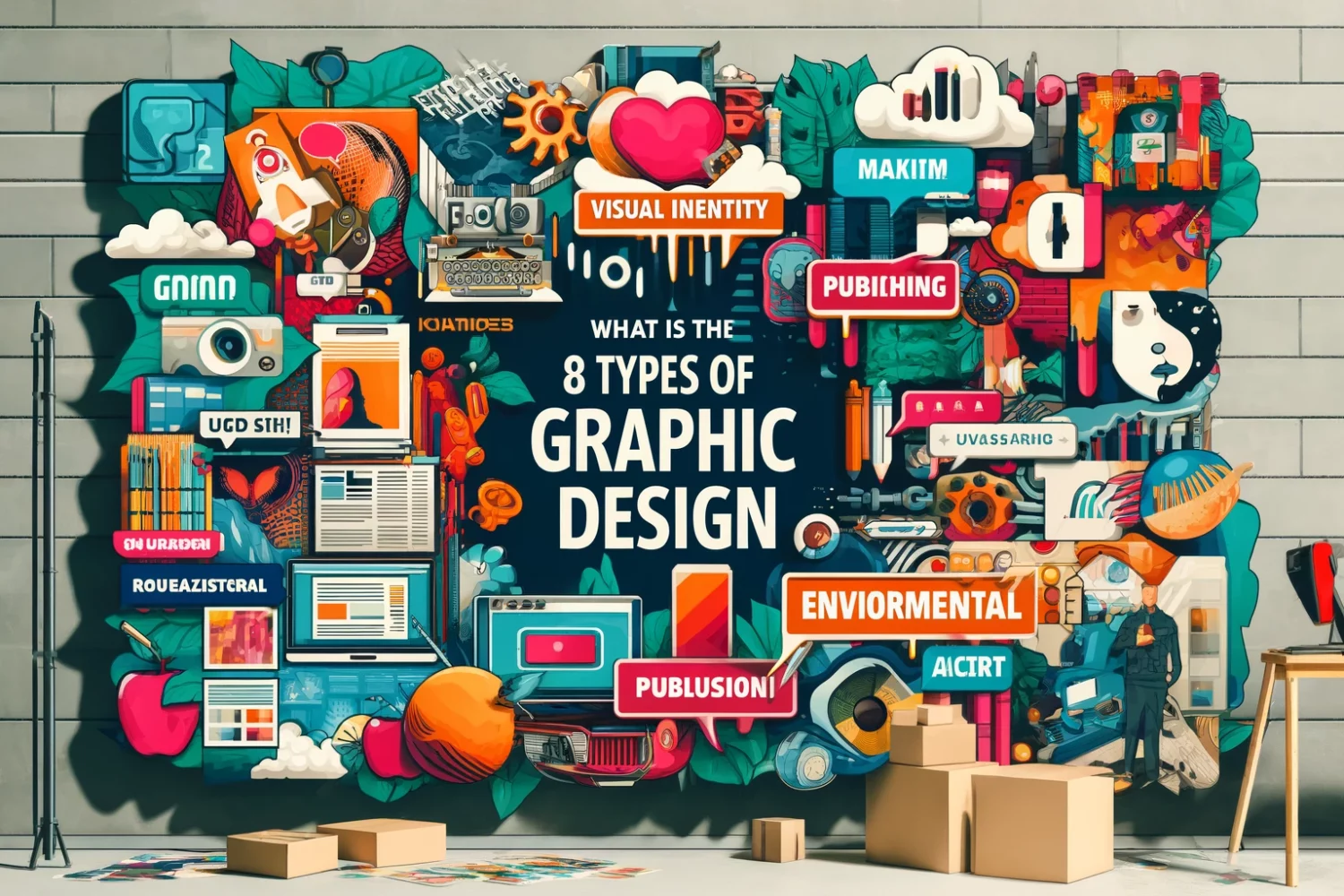Graphic design is a vital tool in shaping our perception and interaction with the world around us, and it plays a crucial role in digital marketing. With the right visual content, businesses can stand out in a crowded digital landscape, connect with their audience, and build a strong brand presence.
In this article, we explore the what are the 8 types of graphic design, each with its unique features and applications. From visual identity design to user interface design, motion graphics to environmental graphics, each type brings a unique set of skills and principles to the table.
What is Graphic Design?
Graphic design is the art of creating and planning visual content that conveys a specific message to a particular audience. It is a vital component of communication that can inform, persuade, and engage audiences. When executed effectively, graphic design can help businesses reach new customers, build brand awareness, and drive sales.
This discipline is crucial in various industries for effective branding, advertising, and communication. It helps to attract attention, convey information, enhance understanding, and create memorable interactions. Whether in digital or print form, graphic design enhances how information is perceived and can significantly influence decision-making and user behavior.
Graphic Design in Digital Marketing
Graphic design plays a pivotal role in digital marketing by enhancing the visual communication between businesses and their audience. It uses aesthetic and strategic elements to boost marketing efforts across various digital platforms. Here’s how graphic design functions within the realm of digital marketing:
- Brand Identity: Graphic design helps establish a strong, consistent brand identity across all digital channels. This includes the creation of logos, color schemes, and typography that become synonymous with the brand, ensuring it is instantly recognizable to consumers.
- User Experience (UX): In digital marketing, the layout and visual appeal of a website or mobile app can significantly impact the user experience. Good graphic design ensures that digital interfaces are not only visually pleasing but also user-friendly and aligned with the user’s needs.
- Engagement: Compelling visuals are more engaging than text alone. Graphic design creates visually striking marketing materials that catch the eye, hold attention, and can lead to higher engagement rates. This includes everything from banner ads and infographics to social media posts and video marketing.
- Conversion Optimization: Well-designed elements can guide visitors through a digital marketing funnel toward conversion. Whether it’s a well-placed call-to-action button, a visually appealing email template, or a streamlined landing page, graphic design plays a crucial role in optimizing conversions.
- Content Enhancement: In digital marketing, content is king, but the presentation of that content is equally important. Graphic design enhances the presentation of digital content, making information easier to read and more attractive, which can help in retaining the audience’s attention and improving content digestibility.
- Advertising: Digital advertising relies heavily on graphic design to create ads that are not only attention-grabbing but also communicate the brand message effectively and succinctly. Whether through static images or dynamic animations, graphic design tailors the visual message to fit both the platform and the target audience.
- Social Media Dynamics: With the rise of content-driven platforms like Instagram and Pinterest, graphic design has become crucial in social media marketing. Well-crafted designs help brands stand out on crowded feeds and can enhance sharing and interaction rates.
what are the 8 types of graphic design
Graphic design is a diverse field that encompasses various specializations, each focusing on different aspects of visual communication and presentation. Here are the 8 main types of graphic design:
- Visual Identity Graphic Design: This type of graphic design focuses on creating the visual elements of a brand’s identity, which convey the organization’s vision, values, and personality through imagery, color, shapes, and typography. Designers create logos, color palettes, typography schemes, and image libraries that represent a brand.
- Marketing and Advertising Graphic Design: Often seen as the most visible type of design, this involves creating graphic content for advertising and marketing purposes. This includes print ads, flyers, brochures, email marketing templates, content for social media, banners, and more, all designed to attract, engage, and convert the audience.
- User Interface Graphic Design: UI design focuses on how users interact with devices or applications. UI designers ensure that interfaces are easy to navigate and user-friendly, involving the design of screens, buttons, icons, and other visual elements users interact with.
- Publication Graphic Design: This type of design focuses on publications and print media. It involves creating layouts and selecting typography and artwork for books, newspapers, magazines, and reports, ensuring materials are both visually appealing and appropriately convey the intended message.
- Packaging Graphic Design: Packaging design involves creating concepts, developing mockups, and producing print-ready files for products. This type of design requires a deep understanding of industrial design and manufacturing, and designers are responsible for ensuring that the packaging not only looks good but also is practical and functional.
- Motion Graphic Design: This emerging type involves graphics in motion. This can include animations, audiovisuals, typography, imagery, video and other effects that are used in multimedia projects. Motion graphics can be seen in commercials, animated texts, informational videos, and web-based animations.
- Environmental Graphic Design: Environmental graphic design combines multiple disciplines to enhance people’s experiences of a space. Common uses include signage, wall murals, museum exhibitions, office branding, and public transport navigation. Designers collaborate with architects and industrial designers to create cohesive environments.
- Art and Illustration for Graphic Design: Unlike traditional design, this type focuses on creating assets for commercial use such as illustrations for books, magazines, product packaging, and apparel design. It also includes creating infographics and technical illustrations to help simplify complex information.
read more about: what are the 4 duties of a moderator
Graphic design relies heavily on specialized software tools that help designers create, edit, and optimize their visual content efficiently. Here are four popular graphic design tools that are widely used in the industry:
- Adobe Photoshop: Photoshop is arguably the most well-known graphic design software. Primarily focused on photo editing, it offers a vast array of tools for raster image editing as well as graphic creation. Designers use Photoshop for creating complex digital paintings, modifying photos, crafting web and app mockups, and designing social media content.
- Adobe Illustrator: Illustrator is essential for creating vector-based graphics. Unlike Photoshop, which is used for raster content, Illustrator provides precision and scalability in designs. This makes it ideal for logo design, typography, and any design work that may need to be displayed at various sizes, from a small business card to a large billboard.
- Sketch: Originally designed for Mac systems, Sketch is a vector-based interface design tool that’s widely favored for web and mobile app designs. It offers an intuitive and lightweight interface that is easier to grasp for new designers and is very effective for wireframing and prototyping.
- Adobe InDesign: InDesign is the industry-standard for publication design, used for creating flyers, brochures, magazines, newspapers, and books. It excels in projects that require multi-page layouts or master pages and is used by both graphic designers and production artists to set up and design print layouts and typographically rich documents.
These tools each serve different purposes but together provide a comprehensive set of capabilities that can handle nearly all aspects of digital and print graphic design. Mastery of these tools can significantly enhance a designer’s ability to create compelling, effective, and high-quality designs.
FAQ
- What is marketing and advertising graphic design?
A: Marketing and advertising graphic design is used to create visual content for marketing and advertising campaigns, including designing brochures, business cards, email marketing templates, and social media graphics. - What is user interface graphic design?
A: User interface graphic design is used to create user-friendly interfaces for software, websites, and applications, including designing icons, buttons, and other visual elements that help users navigate and interact with the interface. - What is publication graphic design?
A: Publication graphic design is used to create printed materials such as books, magazines, newspapers, and other types of publications, including designing layouts that are both visually appealing and easy to read. - What is motion graphic design?
A: Motion graphic design involves creating moving pictures, from animated text in a PowerPoint presentation to feature-length animated films. - What is environmental graphic design?
A: Environmental graphic design focuses on improving the look, feel, and function of public spaces, including designing wayfinding signage, murals, and even street art. - What is art and illustration for graphic design?
A: Art and illustration for graphic design involves creating original artwork and illustrations for various mediums, including print and digital. - What is packaging design?
A: Packaging design involves creating packages that are both functional and visually appealing, requiring consideration of factors such as the shape and size of the package, the materials used, and the printing and decoration methods employed.
Takeaways
Understanding “what are the 8 types of graphic design” is essential for any business looking to enhance its visual communication and marketing strategies effectively. Each type of graphic design addresses a specific need, from establishing brand identity with Visual Identity Graphic Design to engaging users through User Interface designs and making an impact with Motion Graphics.
At Ergasti, we are adept at leveraging these diverse disciplines to create compelling visual narratives tailored to our clients’ specific requirements. Knowing when and how to use each design type can significantly influence the success of your branding and marketing efforts.
We invite you to explore how these graphic design types can transform your brand’s presence. Visit us at Ergasti to learn more about our services, which cover all eight areas, ensuring that every solution is optimized for engagement and effectiveness.

